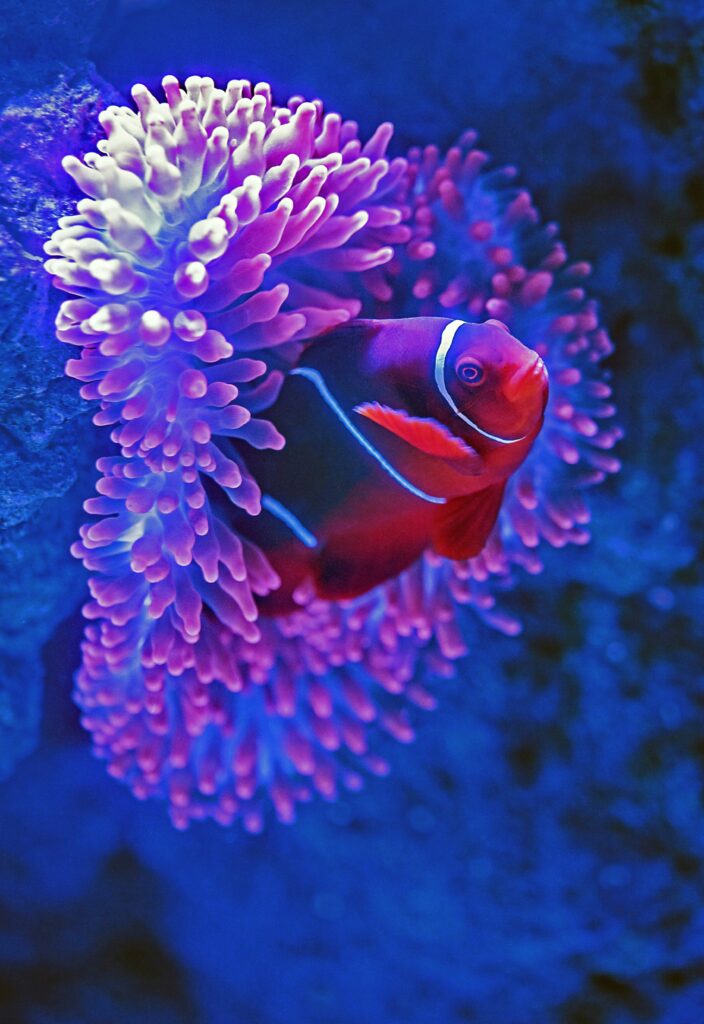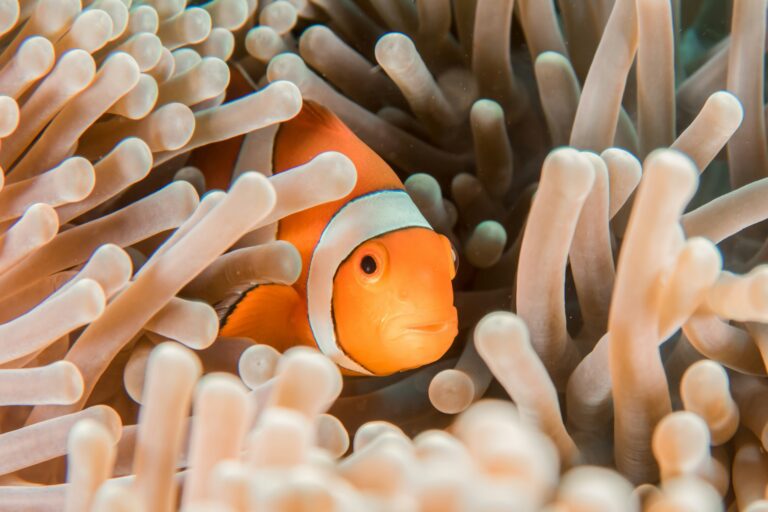In the vibrant world beneath the waves, a fascinating partnership thrives between clownfish and anemones. This symbiotic relationship, celebrated in movies and documentaries, goes beyond its cinematic portrayal, playing a crucial role in the health of coral reef ecosystems worldwide. However, this harmonious bond faces unprecedented challenges today, threatening the survival of both clownfish and anemones. In this article, we’ll explore the intricacies of this relationship, the threats it faces, and the conservation efforts aimed at preserving it.
The Mutualism Between Clownfish and Anemones
Clownfish Benefit from Anemone Protection
Clownfish, also known as anemonefish, have a fascinating symbiotic relationship with anemones, which provides them with crucial protection against predators. Anemones are equipped with specialized stinging cells called nematocysts that act as a defense mechanism against potential threats. These nematocysts can immobilize or deter predators, including larger fish and invertebrates. By residing within the tentacles of anemones, clownfish gain refuge from such predators, as the anemones recognize them as residents rather than prey.
The mucus layer covering the clownfish’s skin helps them become immune to the stings of the anemone, ensuring they aren’t harmed by their host’s defensive mechanisms. Furthermore, clownfish have adapted behaviors to navigate safely within the anemone’s tentacles, avoiding triggering the nematocysts while still reaping the benefits of protection.
Clownfish Aid Anemones with Nutrients and Predator Deterrence
While clownfish benefit significantly from the protection provided by anemones, they also play a crucial role in aiding their hosts. Clownfish contribute to the overall health and well-being of anemones by providing them with nutrients. As omnivores, clownfish have varied diets that include small crustaceans, algae, and plankton. When they consume food, clownfish produce waste that contains essential nutrients like nitrogen and phosphorus. These nutrients are released into the water surrounding the anemone and can be absorbed by its tissues, promoting growth and vitality.
Moreover, clownfish help deter potential predators of anemones through their territorial behavior. They fiercely defend their anemone homes from intruders, chasing away or attacking animals that pose a threat. By doing so, clownfish indirectly protect their hosts, preventing damage or disturbance that could harm the anemones. Additionally, the presence of clownfish near anemones can intimidate some predators, as they are wary of getting stung by the anemone’s nematocysts or facing aggression from the resident clownfish.
This mutualistic relationship between clownfish and anemones showcases the intricate interdependence of species in marine ecosystems. Both parties benefit from each other’s presence, highlighting the importance of biodiversity and symbiosis in maintaining ecological balance underwater.
Threats to the Symbiotic Relationship
Climate Change Impact on Ocean Conditions
Climate change poses a significant threat to the mutualistic relationship between clownfish and anemones by altering ocean conditions. Rising global temperatures contribute to ocean warming, which can disrupt the delicate balance within coral reef ecosystems where clownfish and anemones thrive. Anemones are sensitive to changes in water temperature and can bleach or become stressed when temperatures exceed their tolerance levels. This can lead to weakened anemones, affecting their ability to provide adequate protection for clownfish.
Furthermore, climate change also affects ocean acidity levels due to increased carbon dioxide absorption by seawater. Elevated acidity can hinder the growth and development of coral reefs, which serve as essential habitats for both clownfish and anemones. Without suitable reef habitats, clownfish may struggle to find suitable anemone hosts, leading to a decline in their populations.
Habitat Destruction from Pollution and Human Activity
The symbiotic relationship between clownfish and anemones faces threats from habitat destruction caused by pollution and human activity. Coastal development, runoff from agricultural activities, and improper waste disposal contribute to pollution in marine environments, degrading water quality and harming coral reefs. Anemones are particularly vulnerable to pollution, as contaminants can interfere with their health and survival.
Moreover, destructive fishing practices, such as blast fishing and cyanide fishing, directly damage coral reefs and disrupt the natural balance of marine ecosystems. These activities can destroy both clownfish and anemone habitats, reducing their populations and diminishing the availability of suitable hosts for clownfish.
Overfishing and Its Consequences
Overfishing poses a significant threat to the symbiotic relationship between clownfish and anemones by depleting fish populations and disrupting ecological balance. Targeted fishing of clownfish for the aquarium trade and consumption can lead to declines in their numbers, making them less abundant in coral reef ecosystems. As a result, anemones may struggle to find resident clownfish to provide them with nutrients and protection.
Additionally, overfishing of predatory fish species can disrupt the natural predator-prey dynamics within coral reef ecosystems. Without adequate predation pressure, populations of herbivorous fish may increase, leading to overgrazing of algae on coral reefs. This can indirectly impact clownfish and anemones by altering their habitat and food availability, further threatening their symbiotic relationship.




